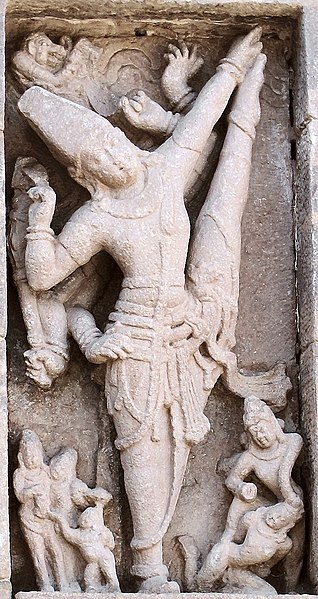Durvasasana or Durvasana, is an advanced standing asana in hatha yoga, with one leg raised and the foot hooked behind the neck. The similar Trivikramasana has the raised leg straight. There are seated and reclining variations including Bhairavasana. Versions of the pose are depicted in statues in Karnataka and Tamil Nadu from the 8th century onwards. Trivikramasana is described in the 18th century Haṭhābhyāsapaddhati; a pose close to Durvasasana is illustrated as "Trivikramasana" in the 19th century Sritattvanidhi.
Durvasasana
Vamana striding the heavens as Trivikrama. Pattadakal Virupaksa Temple, Karnataka, 8th century
Trivikramasana
Pose labelled Trivikramasana in the 19th century Sritattvanidhi
The Sritattvanidhi is a treatise written in the 19th century in Karnataka on the iconography and iconometry of divine figures in South India. One of its sections includes instructions for, and illustrations of, 122 hatha yoga postures.
Opening page of the Kannada treatise Sritattvanidhi (19th century)
The Shiva nidhi section includes the Thirty-two forms of Ganesha; Mahaganapati pictured
A yogini in Aṇkuśāsana, the Elephant goad pose (Bhairavasana)
Gajasana, Elephant pose, a forerunner of Downward Dog (Adho Mukha Shvanasana)








